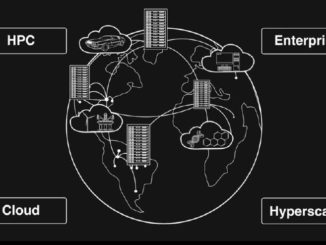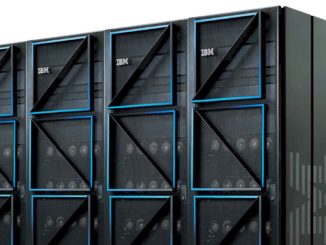
From the time Kubernetes was born in the labs at Google by engineers Joe Beda, Brendan Burns, and Craig McLuckie and then contributed to the open source community, it has become the de facto orchestration platform for containers, enabling easier development, scaling and movement of modern applications between on-premises datacenters and the cloud and between the multiple clouds – public and private – that enterprises are embracing.
Over the past several years, a range of IT vendors have embraced Kubernetes, making it a foundation of their hybrid cloud strategies as organizations continue to move more of their workloads and data to the cloud, a migration that has only accelerated during the COVID-19 pandemic over the last eight months. As we’ve written, VMware, which grew up a virtualization software provider in the datacenter, has grabbed on tightly to Kubernetes as it grows its hybrid cloud capabilities, seeing the open technology as a way to standard for managing both virtual machines and containers. It also has brought in deep Kubernetes expertise, particularly when it bought Kubernetes ecosystem company Heptio for $550 million in 2018. Heptio was co-founded by – among others – McLuckie and Beda, both of whom are now helping to leading VMware’s Kubernetes efforts.
VMware’s Kubernetes-driven Tanzu platform is at the core of its hybrid cloud strategy and has extended Kubernetes integration with products such as vSphere. At the same time, Dell Technologies, which owns most of VMware and is a partner with VMware in its own hybrid cloud strategy, is integrating Tanzu into its VxRail hyperconverged infrastructure.
IBM, which bought open-source giant Red Hat last year for $34 billion to accelerate its own hybrid cloud initiatives, is making Red Hat’s OpenShift Kubernetes platform a focus of those initiatives. Big Blue earlier this month talked to The Next Platform about the importance of OpenShift to its strategy, the highest profile example being as the common platform for IBM’s Cloud Paks, containerized software packages that leverage IBM’s Watson AI technology. They can be run on premises or hosted in cloud environments. “What we’ve been doing is bringing our software capabilities to bear on OpenShift to be available and to run in cloud, in the same distributed fashion but with the same skillset,” Michael Gilfix, IBM’s vice president of integration, told The Next Platform.
Red Hat And OpenShift
It shows how Red Hat and other vendors are building off of Kubernetes’ base as a container orchestration tool with new capabilities and features developed both in-house and brought in from various open-source projects to make it a hybrid cloud platform that delivers the common and consistent environment needed for the growing and increasingly distributed hybrid cloud world.
“OpenShift is much more than just Kubernetes. We have a lot of other services that we have wrapped around them and 100 percent of everything we do is open source,” Stu Miniman, the relatively newl minted director of market insights in cloud platforms for Red Hat, tells The Next Platform. “There are a lot of customers that want some simplicity and the challenges at every enterprise is different and they have different things that they need, they have different skillsets, so we’re meeting them where they are. You can create a snowflake configuration for every single customer, which doesn’t do them any good and doesn’t do us any good.”
Enterprises that spent many years and billions of dollars to harden silos of technology in their datacenters now need a single platform on which to build and run applications on premises, in the cloud and increasingly at the edge, Miniman says.
“Kubernetes is at the core, but Kubernetes has become a standard that just gets baked in,” he says. “It is similar to what we saw Linux do over the last two decades. For most environments, there’s Linux underneath all these things. If you look at the whole software-defined storage and software-defined networking, it’s usually Linux driving a lot of those things underneath. It’s just a given, so when you talk about the cloud need of development and the platforms that we’re doing, yes, Kubernetes is that thin substrate underlayer that gives you a tiny bit of consistency. But when we talk about hybrid cloud environments, most customers do not have everything in one place. If it’s the datacenter and a public cloud, if it’s two public clouds or the edge, I’m going to have more than one environment, so that consistency of operations, that consistency of skillsets and the consistency of code, that’s what we give across the environment. We’ve got thousands of customers and over 100 public references and we’ve been doing this for years. So that maturity of the staff, that maturity of building out those components for both the office and the dev side, is something we’ve helped.”
Red Hat updates OpenShift multiple times a year – about every three to four months – and this week at the virtual KubeCon + CloudNativeCon NA event came out with its latest iteration, version 4.6. As Miniman says, each release – while offering new capabilities – is more about the larger story about the platform and less about each individual new feature. A key message, he says, is that “you need to be able to have flexibility, but not eliminate the simplicity. That’s been the knock on Kubernetes for the longest time. Its ‘Oh, this is tough and how many people do I need to do this?’”
Kubernetes At The Edge
That said, OpenShift 4.6 is rolling out with a range of features aimed at enterprise, with fast-growing edge as a focus. New capabilities include remote worker nodes to drive processing power to space-constrained environments, which is important at a time when the pandemic has forced organizations to adapt to a suddenly widely decentralized workforce. Through the edge features, enterprises can scale their remote operations while keeping operations and management centralized.
“The edge is a a huge growth area,” Miniman says. “Edge and AI [artificial intelligence] are two of the biggest mega waves out there. OpenShift can live anywhere that Red Hat Linux can. Part of the announcement at KubeCon is talking about RHEL [Red Hat Enterprise Linux] 8.3 and how that’s getting to the edge environment. How do we have a lighter footprint from a Kubernetes and OpenShift standpoint? We have different form factors, so we’ve slimmed down to three nodes and we can have a single remote worker node. It’s being able to connect these environments. We tend to talk about cloud and we talk about edge as a location and it’s a one-way journey and it happens and then it’s done. But customers are going to have their datacenter, their hosted environments, the public cloud and the edge. What is created where and where data goes is just this massive moving workflow, so consistency that we can have everywhere end-to-end on is pretty powerful.”
Capabilities inherited from Red Hat’s $250 million acquisition of Kubernetes rival CoreOS two years ago, including greater automation, has helped pave the company’s way to the edge, where latency is a key concern, he says. In RHEL 8.3, Red hat is introducing such features as the ability to more easily create operating system images through Image Builder that are optimized for a broad range of architectures, remote device update mirroring and over-the-air updates, and intelligent rollbacks to protect against workloads problems by enabling organizations to automatically revert back to the last good update.
In OpenShift, Red Hat – which in August rolled out support for three-node clusters – now supports single remote workers nodes in remote locations but managed centrally.
Red Hat also noted its recent partnership announcement with Samsung and Nvidia around enterprise-grade edge deployments focusing on such workloads as AI and 5G.
OpenShift As A Managed Service
In addition, the company already is offering OpenShift as a managed or self-managed service on major public clouds like Amazon Web Services (AWS), Google Cloud, IBM Cloud and Microsoft Azure. The platform now is available on AWS and Azure government clouds, while Red Hat and Microsoft are working together as on Azure Red Hat OpenShift, an offering on Azure that is managed, engineered and supported by both companies. Red Hat expects a similar service to launch on AWS.
For developers, Red Hat is rolling out OpenShift Serverless 1.11 with full support for Knative, an open-source project for deploying and managing cloud-native serverless applications to Kubernetes and a Red Hat build of Quarkus, a Kubernetes-native Java stack supported by the vendor and available through a single OpenShift subscription. It enables developers to repurpose Java applications on Kubernetes.





Amazing work from Red Hat’s crew!